#Parole Laws California
Explore tagged Tumblr posts
Text
Youthful Offender Parole Attorney, California Youthful Offender Parole Our youthful offender parole attorney provides compassionate, experienced legal support for young inmates seeking parole. We know how to navigate the process and present your case in the best light. Let us help you build a brighter future.
#youthful offender parole attorney#youthful offender parole lawyer#california criminal defense attorney#parole lawyers in california#criminal defense attorney#compassionate release lawyers#parole laws california#california youthful offender parole#california criminal defense lawyers#criminal defense lawyer
0 notes
Text
Scott Edgar Dyleski (born October 30, 1988) is an American teenager who was convicted of murdering his neighbor Pamela Vitale, the wife of prominent attorney Daniel Horowitz. He received the maximum penalty allowed by the law, life without parole. As a juvenile he did not qualify for the death penalty.
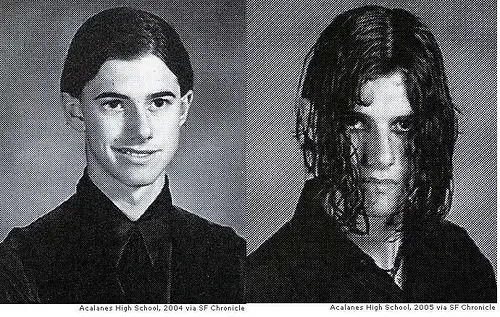

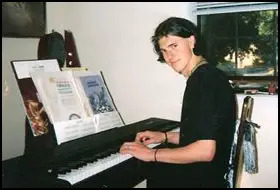
Scott was born in San Francisco, California to Kenneth Dyleski and Esther Fielding. His parents separated when he was two years old, and Scott was raised by his mother. During elementary school, he moved with his mother to Lafayette, California, and began living in the home of another family, with whom they had long been friends. Dyleski attended Lafayette public schools, including Acalanes High School, where he dressed in uncommon clothing such as trench coats and was described as "a nice kid" by a fellow student.
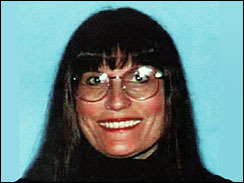
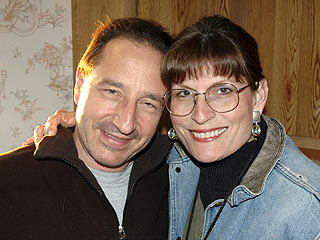
On October 15, 2005, Dyleski's neighbor Pamela Vitale was found murdered in her home. She was found lying in the entryway just inside the front door and had been bludgeoned and eviscerated. Five days later, on October 20, 2005, Dyleski was arrested on suspicion of committing the murder.
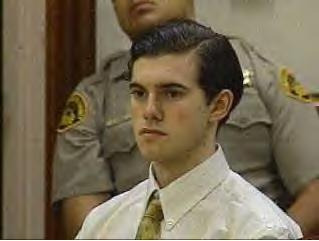
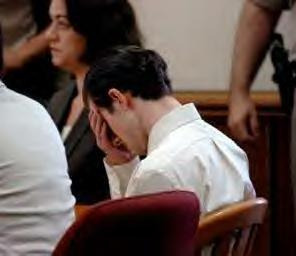
Initially, Dyleski was represented by attorney Thomas McKenna. He later asked to be removed from the case, because he defended the driver of a car that killed Dyleski's sister and another passenger in 2002. Dyleski was then represented by Ellen Leonida, a public defender. Dyleski pleaded not guilty.
Investigators believe Dyleski and his friend, Robin Croen, planned to grow marijuana in Scott Dyleski's closet, with Dyleski in charge of raising money, according to Croen, who was granted immunity for testifying. He testified that Dyleski used stolen credit card information belonging to his neighbors and used the cards to order lighting equipment. He also testified that his role in the credit card scam was researching what equipment to order. Croen actually constructed order forms from websites that he claims he then sent to Dyleski. According to prosecutors, one of Dyleski's orders used the credit card information for Karen Schneider, but mistakenly used Vitale's address as the address to bill, and his own address as the ship-to address. The lighting company refused to process the order, suspecting it was fraudulent. Dyleski told Croen that he would "take care of it" and, subsequently, he made one more attempt by calling the credit card company.
Authorities believe Dyleski was surprised by Vitale during a burglary of her home. However, Dyleski's girlfriend, Jena Reddy testified at trial that Dyleski had talked about beating and breaking the necks of children and was curious about how the human body would function without certain organs. They said he killed Vitale by striking her numerous times in the head, possibly with a rock, and then carved a symbol into her back. During the trial, prosecutor Harold Jewett tried to establish that the symbol found on the victim's back closely resembled the letter "H" in the word "hate" from a bumper sticker reading "I'm for the separation of Church and Hate", which was seized from Dyleski's bedroom. The coroner's autopsy report describes the marks on Vitale's back as an "H-shaped figure cut into skin of posterior torso" and "3 intersecting superficial incisions... forming an H-shaped pattern with extension". Other reports indicate that the symbol was a Cross of Lorraine.
At the conclusion of the preliminary hearing, judge Mary Ann O'Malley ruled that prosecutors had enough evidence for trial. Dyleski was arraigned on an additional charge of first-degree residential burglary and he entered a new plea of not guilty to all the charges. His mother was accused of helping her son destroy evidence, but the charge was dropped under the condition that she testify truthfully. Burglary was not presented as a motive during the trial and, in fact, it was stated that nothing had been taken. At trial, Daniel Horowitz said he had never gone through his wife's financial records to see if anything was amiss.
Jury selection began in July 2006 in the courtroom of judge Barbara Zuniga, who became the trial judge after defense attorney Ellen Leonida made a peremptory challenge against judge Mary Ann O'Malley on the grounds that the jurist was "prejudiced against the interest of the defendant". Attorneys provided contrasting views of Dyleski in their opening statements. Prosecutor Harold Jewett said Dyleski identified with gothic symbols and art that depicted violence and stabbed and beat Vitale. Leonida described her client as a gentle kid whose friends know he is not a killer and instead valued human and animal rights.
During the trial, the Nickelodeon animated television series Invader Zim was cited. The prosecution asserted that the defendant had a fascination with images of body parts. They drew attention to comments he had made after watching the episode "Dark Harvest", in which the alien Zim collects human organs in an attempt to appear more human. Witnesses for the defense said that the comments were made in jest.
At the end of August attorneys gave closing arguments, capping several weeks of testimony. The prosecutor called to the stand Dyleski's housemates, mother, girlfriend, friend, a forensic pathologist, a DNA expert and several criminalists. Lawyer Gloria Allred represented Jena Reddy, Dyleski's girlfriend. She told the jury that while Dyleski never admitted or denied killing his neighbor, he told her he would take the blame to protect her and his best friend. DNA evidence showed Vitale's blood was found on Dyleski's belongings, the DNA of both Vitale and Dyleski was found on the ski mask worn during the murder, and his DNA was found on the bottom of her foot. A shoe print at the murder scene was determined by the jury to match shoes belonging to Dyleski. Jason Kwast, another criminalist, testified that the pattern of bloody footprints found on a plastic lid that was discovered in Vitale's house matched the pattern of the bottom of Land's End shoes belonging to Dyleski. A chilling to-do list was purported to have been written by Dyleski. Leonida called a number of Dyleski's friends to serve as character witnesses. Dyleski exercised his right to remain silent and did not testify. No DNA experts were called to rebut the prosecution's DNA evidence.
Scott Dyleski was found guilty of all the charges against him: first-degree murder, the special circumstance of murder in the commission of a first-degree residential burglary, first-degree residential burglary and an enhancement for using a dangerous weapon to bludgeon Vitale.
Even though Scott was originally sentenced to life without parole, in 2018 Dyleski's sentence was reduced to 25 years to life in prison after the state of California passed Senate Bill 394, which bill gives juveniles tried as adults and sentenced to life without parole a chance for eventual freedom. He will be eligible for parole in 2030.
234 notes
·
View notes
Text
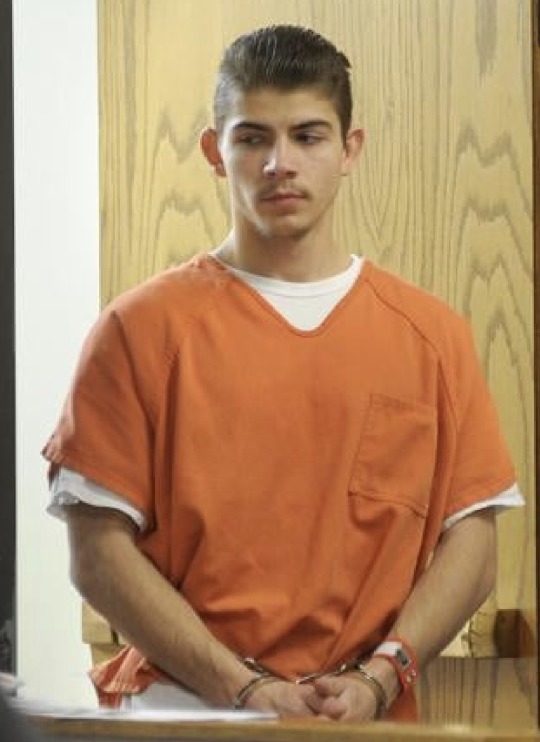



Post 1371
Chase Leonard Bomar, California inmate BV7380, born 1998, incarceration intake August 2023 at age 24, sentenced 16 years to life, scheduled release date not published, parole eligible August 2029
Murder
In July 2023, a year after a jury found brothers Chase and Cody (California inmate BV7381) Bomar guilty of second-degree murder in the 2018 killing of their former roommate Jeremy Fortuin, the brothers were sentenced.
Both Bomars were sentenced to 16 years to life in prison, including a one-year enhancement for being armed with a deadly weapon. As the second-degree murder charge is a serious, violent felony offense, it counts as a first strike for both Bomars and would count as an enhancement in future trials in accordance with California's "three strikes" law. If the Bomars do attain release in the future, they will be subject to a lifetime term of parole or post-release community supervision.
Though the Bomar brothers' weeks-long jury trial concluded July 19, 2022, a series of rescheduled dates led to the delayed sentencing that finally unfolded.
Before their sentences were delivered, the court held a 'Franklin hearing' for the Bomar siblings; at the time of Fortuin's murder, Chase was 19 and Cody was 21. Taking into consideration their young age and a letter of recommendation from the brothers' pre-trail release officer, the Judge was called upon to rule if the Bomars' case constituted as unusual, which would allow for the two to be placed on probation rather than sent to prison.
Evidence proffered during the hearing included a letter from the release officer, a psychiatric analysis and a letter from Cody that expressed his remorse. Though the pair were young at the time of the crime and had no significant prior history of criminal offenses (Chase had a prior juvenile offense and had successfully served his probation), the Judge's analysis led her to decide against the possibility of probationary release for either brother.
4d
115 notes
·
View notes
Text
A critically ill 4-year-old girl living in California with her mother was asked to self-deport last month, but her lawyers and doctors say she could die if her treatment is interrupted.
Deysi Vargas, 28, and her daughter, identified by the pseudonym Sofia, arrived in the U.S. from Mexico in 2023, seeking better medical care to treat the young girl’s short bowel syndrome, a rare condition where a significant portion of the small intestine is missing or unable to function properly, according to reports from the Los Angeles Times.
The two entered the U.S. legally under a humanitarian parole, but last month the Trump administration terminated their parole and ordered them to self-deport, according to the family’s attorneys at the Los Angeles-based Public Counsel.
“It is time for you to leave the United States,” The letter by the Department of Homeland Security reviewed by HuffPost read.
DHS warned Vargas that if she did not leave the U.S. immediately, she would be subject to potential law enforcement actions that would result in her removal unless she obtained a “lawful basis to remain.” In addition to the warning, DHS terminated any benefits connected with Vargas’ parole, such as work authorization.
Gina Amato, one of the family’s lawyers, told local CBS affiliate WSAW that Sofia and her mother “were not given any reason as to why” they were asked to self-deport and “were supposed to have parole through the end of July.”
The Department of Homeland Security told HuffPost that the family is not actively being deported and that they “applied with USCIS for humanitarian parole on May 14, 2025, and the application is still being considered.”
Vargas detailed her daughter’s treatment on GoFundMe, saying that due to her illness, she cannot take in nutrition on her own.
“Sofia receives intravenous nutrition 14 hours a day and needs to visit the hospital every six weeks. Without the treatment provided by Children’s Hospital [Los Angeles], Sofia will die,” Vargas wrote.
37 notes
·
View notes
Text
Karma took the wheel.
The serial Tesla road-rage driver who landed back behind bars for allegedly assaulting a teen driver and her mother in Hawaii last week was found beaten to a bloody pulp in prison.
Nathaniel Radimak, 39, was assaulted by inmates at Halawa Correctional Facility around 4:25 p.m. Monday, the Hawaii Department of Corrections and Rehabilitation told ABC 7.
“Nathaniel Radimak was allegedly assaulted by other inmates in a housing unit at the Halawa Correctional Facility,” public information officer Rosemarie Bernardo said.
The hot-headed driver “sustained injuries to his face and torso” and was taken to the Queen’s Medical Center for treatment.
Radimak was photographed wearing his orange prison jumpsuit in a hospital wheelchair with a badly bruised and bloody face following the alleged assault.
The Department of Corrections and Rehabilitation said it is investigating the incident.
Radimak’s assault comes after he was arrested May 8 for losing his temper and allegedly becoming violent with another motorist.
Radimak — who has been out on parole since August after he served only 10 months of a five-year prison sentence — was speeding in a gray Tesla in downtown Honolulu when he raced past an 18-year-old driver parking her car on Halekauwila Street on May 7.
The female teen driver yelled at Radimak to “slow down” as he sped by them, prompting him to get out of the vehicle and start arguing with her and her mother.
The girl’s mother, Diane Ung, estimated that Radimak was driving around 40 to 50 miles per hour as she was trying to teach her daughter how to parallel park outside their home.
Ung claimed Radimak struck her and her daughter in the face during the confrontation before he got back in his Tesla and fled.
“Halfway in his car already, and he says, ‘What did you say to me? You better shut your face before, you know, I come and do that the same thing I did to her,’” Ung told KITV.
“Had my coffee in my hand, my ice coffee from McDonald’s, threw it at his car and he came running across the street, struck me like a Superman punch right inside my face. I fell down to the ground. Big gash in my head.”
The road-rager allegedly attacked the mother and daughter while an infant, who was not injured, was inside the teen’s car.
Radimak was charged with unauthorized entry into a motor vehicle and two counts of assault.
Radimak made headlines as the pipe-wielding Tesla driver who terrorized California highways over the years.
In one viral video, Radimak jumped out of his charcoal-colored 2022 Tesla Model X with no license plates, armed with a pipe, and pummeled the truck behind him on Jan. 11, 2023.
Another victim of Radimak’s rage, identified as Gracia, had a run-in with Radimak in November 2022 at a storage facility in Los Angeles when the Tesla-driving maniac began unprovokedly harassing her and followed her in his car after she tried to escape.
Recording the encounter for her safety, Radimak yelled at Garcia to go back to “where you came from” and hurled expletives at her after catching up to her before fleeing.
He was arrested in February 2023 after several dashcams captured him attacking vehicles on highways in Southern California.
He was charged with four counts each of assault by means of force to produce great bodily injury and criminal threats, and one felony count of vandalism.
During his arrest, police found nearly $30,000 worth of steroids in his car.
Radimak was sentenced to five years in prison, but a parole board cut him loose in August.
The California Department of Corrections and Rehabilitation said Radimak had served “his full sentence as defined by law” and was granted 424 days for time served while awaiting sentencing, 212 for actual days in jail, and another 212 days for good behavior.
He’s scheduled to appear in court on Thursday, May 15, to face new felony charges.
18 notes
·
View notes
Text
Love and Care at any cost
July 21, 1989. Friday
Glen Sanders got out of prison today. He was a flashy blonde attorney in Modesto, California. He is now, after release from prison, a tanned muscular hardened soul. He will move from law to selling cars in Orange County. We had gone to Mallard’s on Bearnie’s request and lo and behold, Glen shows up. He said that the worst part about prison was the trip there. He kept hoping that the bus would crash (and he would die). But, upon arrival he was placed in a 60 man barracks with 56 blacks, 3 whites and 1 Mexican. (OK, it was a 61 man barracks). He went to lie on his bunk. Next thing he knew, a huge black man hovered over him and said “We need white guys. You wanna work in the Kitchen? “Ok” said Glen. Glen did work in the kitchen for a time, but , then was sent off to Folsom Prison. There, even though he was very low security, he was housed with a guy doing 154 years. Because prisons are run by inmate clerks, the inmates had know that he was coming for a week. So, upon his arrival, he was treated as somewhat of a hero. He was sent a TV, a radio, coffee and cigarettes by the bros. He would be awakened by punk headed youths—“Man, can you look at my appeal?” He was known as “lawyer man”.
He said prison was not dangerous, just deadly dull. It’s not at all what we outsiders think. Guys in there grow to like it. You are fed and housed and it’s like the military. But, mail and visitors are important. He got lots of mail and visits from people like Modesto attorney F. Who he hardly knew.
And, just before he was sentenced, he said Judge U. , who was going to sentence him, came to his jail cell and said “I don’t want to sentence you to prison, but I must." Glen knew then a political fix was in.
Toward the end of his prison stay, representatives from the Governor’s office searched through the prisons for the perfect representative inmate to represent inmates regarding industry--making money via production, or some such thing, while in prison. They picked Glen and he was on TV many times. Glen was also “shipped in for meetings with the Duke et. All. And, he was called by the Governor ,too.
We set in awe and listened at Mallards on hard stiff stools. We bought him one of his first drinks in a year and a half. He asked “what’s it like now in the courts?” We told him the story like we would to the walking dead.
But, I forgot to mention that he said as guys near exit time (from prison) they panic…”What am I going to do out there? Maybe I can last 60 days." They hope to be violated and returned.
Love and care at any cost.
End of entry
Notes: 3/2/2025
The Governor of California in 1989 was George Deukmejian (Duke)
Per a Modesto Bee 1985 article, Glen Sanders had been charged with conspiracy to obstruct justice and to cause perjury.
“An ex-convict on parol testified Friday (in the trial of Glen Sanders.)
he committed perjury 4 years ago to help a client of Modesto attorney Glen S. fight a murder charge.”
Please see the Modesto Bee article mentioned above in the following blog post.
Glen died. Years later of complications due to diabetes.
#journaling#writing#7/21/1989#Criminal Law Attorney sentenced to prison#Prison Life#California George Deukmejian prioner outreach
21 notes
·
View notes
Text
EVERYONE SHOULD BE TALKING ABOUT THIS!!!!!
Huge GIGANTIC TW for SA, mentions of rape, mentions of masturbation, and transphobia.
A 2018 report from the Indiana University Maurer School of Law along with a subsequent report in the UCLA Journal of Gender and Law, found that it was common for trans women placed in men's prisons to be assigned to cells with aggressive cisgender male cellmates as both a reward and a means of placation for said cellmates, so as to maintain social control and to, as one inmate described it, "keep the violence rate down". Trans women used in this manner are often raped daily. This process is known as "V-coding", and has been described as so common that it is effectively "a central part of a trans woman's sentence". The report also found it common for correctional officers to publicly strip search trans women inmates, before putting their bodies on display for not only the other correctional officers, but for the other prisoners. Trans women in this situation are sometimes made to dance, present, or masturbate at the correctional officers' discretion. The prisoners serving as customers for these women are informally referred to as "husbands". A 2021 California study found that 69% of trans women prisoners reported being made to perform sexual acts they would have rather not, 58.5% reported being violently sexually assaulted, and 88% overall reported being made to take part in a "marriage-like relationship". Trans women who physically resist the customer's advances are often criminally charged with assault and placed in solitary confinement, the assault charge then being used to extend the woman's prison stay and deny her parole.
This not only happens in the USA, but happens globally and there has been documented cases of it happening in France and the UK as well.
Many people aware of it fear that it will drastically increase after Trump's Project 2025 as trans women are arrested and imprisoned for simply existing in public, this is a real possibility, and the influence can spread globally to cause other nations to do this too.
Best I can say is: SPREAD AWARENESS PEOPLE!
Written by u/communistsorcerer
Commented on a post by u/communistsorcerer on r/traaaaaaannnnnnnnnns2
Spread this!!!!!!!
#lgbtqia#lgbtq#lgbtq community#gay#lesbian#bisexual#transfem#transmasc#transgender#aromantic#asexual#nonbinary#anarchism#fuck the police
94 notes
·
View notes
Text
Common Side Effects Season 2
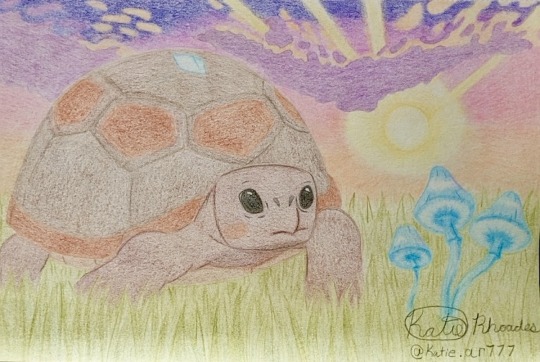
This is a fan fiction of the show Common Side Effects. Both the cover art and the story are by me. But the characters belong to Adult Swim. It picks up exactly where season 1 leaves off, and sticks with the cannon. It's a drama/romance/comedy. Yes, I am aware they are making a real season 2. But I loved the first season so much and I just couldn't wait to see more so I made my own continuation. If you enjoy it, please leave a like and a comment! If you want to read the rest of this story, go to my Wattpad (link in my bio.)
Chapter 1 - Hostage Situation
Cecily stood in front of a big screen in a dimly lit room. She clicked a button on the remote she was holding and a neon blue mushroom appeared on the screen. “This is the blue devil, it’s a schedule 1 drug. It’s more deadly than fentanyl. Anyone found with any on their person or in their system gets a life sentence. No parole.”
Harrington looked around the room at the other FBI agents. None of them seemed to question the dubious and unscientific claims. Cecily continued talking. But her words were overshadowed by the existential crisis in Harrington’s head. “Am I getting paid to hunt down an innocent man? Am I just another cog in the machine, grinding up people to meet arrest quotas? Am I the problem? Or are they right and did I just poison my best friend?”
Cecily clicked the button and a picture of Marshall and Francis appeared on the screen. “This is Marshall Cuso and Francis Applewhite. They’re the ones who brought the blue devil here and started growing it.” Click. “This is the town of Averasboro, North Carolina. Their water supply was intentionally contaminated with the mushrooms. And they’re the ones who did it.” She said as she clicked back to the picture of Marshall and Francis.
“Wait, I saw Marshall leaving town before the water supply got contaminated. There were tons of people at the crime scene too.” Harrington replied.
Cecily glared at her. “You mean to tell me you let him get away twice?”
“Wait no I told-“
“This debriefing is over. Harrington, come see me in my office.”
Harrington started to sweat. Nothing scared her. Except Cecily and her habit of making anyone who disagreed with her a wanted criminal. “You wanted to talk?” She said, trying to sound as casual as possible as she sat down in front of Cecily’s desk.
Cecily closed the door and walked up to her, looming over her. “Do you think I’m stupid?”
“What?”
“Your best friend gets shot right in the lung, survives, and now you’re defending the mushroom guy.”
“Okay if you have beef with me then do something about it. But leave Copano out of this. He doesn’t work for you anymore.”
“Oh I will leave him out of it, if you can get the two most dangerous criminals behind bars. Otherwise Your friend is getting a court mandated blood test. When he’s positive for the mushroom, both of you are going to be locked up forever.”
Harrington’s heart palpitated. She had a choice. Abandon her morals and be under this dictator’s thumb forever, or see the only person she truly cared about be imprisoned just because she valued his life more than the law. She decided to throw her morals to the wind.
Meanwhile in Joshua Tree National Park, CA
Francis half listened as Marshall went on a tangent about soil pH and phytonutrients. “So you can’t simply grow them with your garden variety fertilizer, you need tortoise dung.”
“Marshall”
“But the good news is Zayne knows where to get more-”
“Marshall!”
“What?”
“We can talk about tortoise dung tomorrow. We both just drove from the east coast to California in like two days. We need to take a break. Let’s check this place out.” She held up a brochure for the park they were at and pointed to a section about a hot spring.
“That’s actually not a bad idea. I think I need to take a beat. I’m still hallucinating a little, unless there’s actually a weird little guy sitting on your head.”
“You’re definitely hallucinating.” She laughed, “come on.” She took his hand and they started climbing down the rock formations to the hot spring.
They couldn’t have picked a better time of day to make the half mile trek to the hot spring, the orange sun was setting in the distance and a few crepuscular critters were out and about. When they arrived at the edge of the water, Marshall scanned the surroundings. He felt uneasy despite the complete lack of people and commotion, he couldn’t place why though.
“Alright I’ll get in but I’m not taking my clothes off, I already have an arson I don’t need to add an indecency to the list.” He said as he stepped into the water.
Francis rolled her eyes. “There’s nobody here, but suit yourself.” She dropped her shirt on a rock and followed him in.
He stared off into the distance “How are we even going to do this? I wasn’t able to get any of the mushrooms before I escaped. Hildy’s got them. She’s probably not even using them to help people. God I bet she’s using them to try to control people like MKUltra except instead of the CIA it’s just one crazy old lady and her goons.”
“She got raided by the FBI, she’s probably in jail. And anyways you‘ll figure it out, I mean you figured out how to bring the dead back to life.”
He took a deep breath and looked at her. “You’re probably right, I should try to take my mind off it.”
“Exactly, you spend so much time trying to help everybody else. Why not focus on what you want for a night?”
“You know what, I think I will.” He moved closer and slid his hand around her waist. She leaned in to kiss him. But the instant before their lips could touch, the sound of an engine revving interrupted them.
Harrington drove down the highway on her motorcycle. She looked around at the sandy landscape of Joshua Tree. There was nobody around except for some lizards and cacti. Perfect. No witnesses. She pulled into the RV park where Marshall was staying. There were a few other campers there, but people were either inside or away. She tried the handle on the door, it didn’t budge. She picked up a rock, smashed the window and climbed through. The lights were off and the camper was unoccupied except for the one signal resident who was illuminated by a heat lamp. “Sorry buddy, nothing personal, it’s just business.” She said as she extended her hands to pick up the tortoise. A catchy song snapped her out of the moment. It was her best friend’s ring tone. She put the tortoise down and answered immediately.
“Copano? Oh my god I’m so glad to hear from you, are you okay?”
“Of course I’m okay, you know that, you’re the one who-”
“Hey hey I didn’t do anything.”
“Chill, I was going to say you’re the one who called for help when I got shot. I know how phones work, I’m a detective too dummy.”
“Right.” She sighed with relief. “But how are you feeling, are you having any um after effects? From being shot I mean.”
“Hm. I have been seeing some weird stuff, almost like there’s a whole other world that’s been here all along, but I’m the only one who can see it.”
“Okay so you’re basically how you always are.”
“Hah, yeah pretty much. Oh you know who came to visit me when I was in the hospital? My ex wife and the kids.”
“Oh that’s great.”
“What the hell are you doing here!?” Marshall shouted as he opened the door. Francis arrived at the door just a few seconds after, looking just as shocked as he did.
Harrington hung up the phone, grabbed Socrates and put her pistol to his shell. “Don’t move.” She said coldly.
12 notes
·
View notes
Text
Max Factor heir and convicted rapist Andrew Luster is set to walk free after being granted parole - as victim slams Kamala Harris reform law
The disgraced Max Factor heir who was convicted of 86 counts of drugging and raping unconscious women in 2003 is set to be released early after his crimes were reclassified as 'non-violent' under a 2016 law change masterminded by Kamala Harris, DailyMail.com can reveal.
Andrew Luster, now 60, infamously fled to Mexico during his rape trial – only to be tracked down by Dog the Bounty Hunter and hauled back to the US in chains.
Now one of his victims has bravely come forward in an exclusive interview to talk about her fears at his imminent freedom.
Tonja Balden, 51, who was just 23 when she was drugged and raped by Luster after a night out in Santa Barbara, told DailyMail.com. 'I'm afraid that when he is released he may continue the same crimes. He just turned 60. That's not very old.
'It is so psychopathic to set up this type of thing where you find a woman, drug her, and then she's an unconscious body and to do all of these things to her while you're videotaping it. That is a real sadistic way of thinking that I don't know if that can be fixed.'
Initially handed 124 years in prison, depraved Luster's sentence was revised down to 50 years in 2013 on appeal.

And now the serial rapist will walk free from Valley State Prison in Chowchilla, California, in a few months' time after being granted parole in August, having served just half his sentence.
17 notes
·
View notes
Text
“And now the news”:
The wildfires engulfing Los Angeles County have scorched more than 36,000 acres, or 56.25 square miles — a total area larger than some of the United States’ most densely populated cities. They have spread to roughly 36,365 acres combined.
The Palisades Fire has burned over 20,000 acres and destroyed more than 10,000 structures, and as of 9 a.m. was 8% contained, which is progress from last night when it was 6% contained at 10 p.m., thanks to favorable wind conditions overnight.
The Eaton Fire in Pasadena-Altadena has now destroyed 13,956 acres with 3% containment. The fire is believed to have damaged or destroyed 4,000 to 5,000 structures. The fire did make a push toward Mount Wilson Observatory on Thursday, but the building did not suffer any damageand the relay antennas atop the mountain for communication across Southern California are unharmed.
The Palisades and Eaton fires have become the No. 1 and No. 2 most destructive fires in Southern California history.
The red flag warning will continue until Friday at 6 p.m. PST, but firefighters will be preparing for the next red flag event expected to begin on Monday.
Los Angeles Sheriff Robert Luna said the devastation caused by the wildfires in Los Angeles has been catastrophic and that “parts of the city look like an atomic bomb was dropped.” (He’s right)
So far, at least five blazes have burned an area:
About the same size as Miami…
Two and a half times larger than Manhattan.
Larger than San Francisco and Boston, both of which cover more than 46 square miles…
And around 3.5% the size of Rhode Island, the smallest state.
And it really is worse than it looks. Whole neighborhoods have been devastated, leaving nothing but rubble. At least 10,000 properties have been destroyed, the Los Angeles County assessor said. The death toll has risen to ten and will go higher once it is safe to enter the burned-out areas; one of the ten was found in front of his house with a garden hose in his hand. The Palisades Fire could be the costliest in US history, according to a climate expert. The overall cost is estimated at more than $50 billion and will go higher.
Firefighting teams are expecting more wind and dry conditions to continue to complicate efforts into next week. If winds are too strong, firefighting aircraft won’t be able to take off.
California Insurance Commissioner Ricardo Lara has used his moratorium power to stop non-renewals and cancelations of fire insurance for one year.
A man questioned by police about possible attempted arson Thursday afternoon was arrested on a felony parole violation charge, Los Angeles Police Department Assistant Chief Dominic Choi said Friday morning. Officers responded to calls about a man trying to start a fire who was being detained by members of the public in the 21700 block of Ybarra Road in Woodland Hills, near the Kenneth Fire, at 4:32 p.m. Due to lack of probable cause he was not arrested or charged, , but he was arrested on a felony probation violation.
The Los Angeles District Attorney announced that anyone flying an unauthorized drone will be “prosecuted to the maximum.” "If you're thinking that it's fine to send a drone up in the area for your own amusement, or you want to get information that nobody else can get, and you do it in one of these areas that for which drones are not permitted … you will be arrested, you will be prosecuted and you will be punished to the full extent of the law.” This follows an incident yesterday in which one of the Canadian “Super Scooper” water bombers collided with a drone over a drop over the Palisades Fire, damaging the nose gear and putting the plane out of service until at least Monday for repair. This leaves only one of the “Super Scoopers” in service.
Updates to follow.
7 notes
·
View notes
Text

LYLE & ERIK’s parole board hearings are scheduled for August 21st & 22nd, 2025.
The purpose of a parole suitability hearing is to determine whether an incarcerated person currently poses an unreasonable risk of danger to society if released from prison. In making this determination, the hearing panel will consider all relevant, reliable information available to the panel, statements from the offender, victims, victims’ family, and statements from the district attorney’s office and the public.
The panel will review and ask the incarcerated person questions about their social history, past and present mental state, past and present attitude toward the crime, criminal history, and other criminal misconduct that has been reliably documented, as well as the person’s commitment offense(s). The panel will also consider the person’s behavior before, during, and after the crime(s). In addition, the hearing panel will consider special conditions under which the incarcerated person may safely be released to the community and any other information which bears on the person’s suitability for release.
There are a number of factors the Board will consider that tend to show an person’s suitability and unsuitability for parole. These factors are general guidelines and “the importance attached to any circumstance or combination of circumstances in a particular case is left to the judgment of the panel.” Additionally, the California Supreme Court has held that “the presence or absence of insight is a significant factor in determining whether there is a rational nexus between the person’s dangerous past behavior and the threat the offender currently poses to public safety.” Some examples of factors the Board will consider include the following:
Factors Tending to Show Parole Suitability
lack of a juvenile record or significant history of violent crime
crime was committed as a result of significant stress
stable social history
remorse and understanding of the nature and magnitude of the offense
present age reduces the probability of recidivism
realistic plans for release and marketable skills
institutional behavior indicates an enhanced ability to function within the law upon release
Factors Tending to Show Parole Unsuitability
the commitment offense was committed in an especially heinous, atrocious, or cruel manner
previous record of inflicting or attempting to inflict serious injury on a victim, particularly if serious assaultive behavior was demonstrated at an early age
unstable social history
prior sexual assault in a manner calculated to inflict unusual pain or fear upon the victim
lengthy history or severe mental problems related to the offense
serious misconduct while in prison or jail
What to Expect After a Parole Suitability Hearing
All decisions by a hearing panel are proposed decisions. Proposed decisions will become final within 120 days from the date of the parole hearing. During the 120 days following a parole hearing, the audio recording of the hearing will be transcribed and the decision will be subject to review by the Board’s legal office.
Review of Parole Decisions by the Board’s Legal Division
The Board’s legal division may review any parole hearing decision, but it is required to review all decisions resulting in a grant of parole. Decisions are reviewed to determine if the panel made an error of law, if the panel’s decision was based on an error of fact, or if there is new information that should be presented to the Board, any of which when corrected or considered by the Board has a substantial likelihood of resulting in a substantially different decision upon a rehearing.
If the chief counsel finds there was an error of law, error of fact, or there is new information that should be presented to the Board, he or she will refer the case for review and a vote by the full Board at one of the Board’s monthly executive Board meetings. This is referred to as an “en banc” referral, meaning it is being referred to the full Board for review. The Board will review the case and vote to affirm the decision of the hearing panel, vacate the decision of the hearing panel and order a new hearing, or modify the decision. The Board will accept comments from the public at the Executive Board meeting and will review comments submitted in writing before the Executive Board meeting before rendering a decision on the case.
If the chief counsel or a hearing panel member does not refer the decision to the full Board for review, the decision will become final within 120 days after the date of the parole hearing.
The Governor’s Review of a Parole Decision
Parole decisions that become final are subject to review by the Governor. The Governor has 30 days to review a decision. The Governor may take no action and allow the decision to stand, reverse the decision (if the incarcerated person was convicted of murder), or refer the decision to the full Board for review “en banc” and a vote at one of its monthly Executive Board meetings.
If the Governor takes no action on a parole grant, the incarcerated person will be scheduled for release. In some cases, however, the person may not be immediately released, such as when the offender was convicted and sentenced for a crime they committed while in prison. Generally, sentences imposed for in-prison offenses must be served after the incarcerated person has received a grant of parole by the Board.
If the Governor reverses a grant of parole, the offender will be scheduled for a new parole hearing within 18 months from the date of the person’s last parole hearing.
If the Governor refers a decision to the full Board for en banc review and a vote, the Board may affirm the hearing panel’s decision, modify the decision, or order a rescission hearing to determine whether the person’s grant of parole should be rescinded. If the Board votes to affirm the hearing panel’s decision or to modify the hearing panel’s decision, the incarcerated person will be processed for release by the California Department of Corrections and Rehabilitation. Some offenders may not be immediately released, such as when the incarcerated person was convicted and sentenced for a crime they committed while in prison. Generally, sentences imposed for in-prison offenses must be served after the offender has received a grant of parole by the Board. Others may need to serve additional time if they were granted parole at their first parole hearing and have not yet reached their minimum eligible parole date. (🔗)
6 notes
·
View notes
Text
Three Strikes Parole Attorney Helping Inmates Win Early Release
In California, the Three Strikes Law can lead to extremely long prison terms. Even non-violent third offenses can mean life behind bars. But changes in the law and recent reforms now give inmates new hope. At Michael Evan Beckman, California Parole Lawyers, we focus on helping inmates get a second chance at life.
#three strikes parole#three strikes parole lawyer#california criminal defence lawyers#california civil rights lawyer#california criminal defense lawyers#california criminal defense attorney#parole#parole lawyers in california#parole laws california#california youthful offender parole#criminal attorney#criminal defense lawyer#compassionate release lawyers#criminal defense lawyers
0 notes
Text
A report released in January by the Electronic Frontier Foundation (EFF), a digital civil liberties organization, found that the Los Angeles County Sheriff’s Department improperly accessed databases with sensitive personal information thousands of times in 2023.
According to annual reports submitted by the department to the California Department of Justice (DOJ), deputies flouted a rule against accessing the California Law Enforcement Telecommunications System database, known as CLETS, to run background checks for concealed carry permits. California law enforcement officers use the CLETS database daily for investigations, traffic stops, and checking for restraining orders for calls involving domestic disputes. It gives police access to a trove of personal information, including records housed with the Department of Motor Vehicles (DMV) and the National Crime Information Center (NCIC). The NCIC, run by the FBI, tracks and shares crime-related information with police, including parole records and a person’s immigration status.
In a statement, the sheriff’s department said its employees were “unknowingly” accessing CLETS for background checks related to concealed carry permits and blamed their system’s outdated programming. “Once this issue was discovered, immediate corrective action was taken to mitigate unintended access.” According to the statement, the department has since updated the programming and instituted warnings to prevent the access issues from happening again.
The CLETS Advisory Committee meeting minutes from May also reported that sheriff’s department deputies were retrained, and new procedures were implemented to prevent further issues.
But the department’s self-imposed consequences aren’t enough for Mohammad Tajsar, an attorney with the ACLU of Southern California. “At the Sheriff’s Department, heads must roll,” he said.
4 notes
·
View notes
Text




Post 1387
Cody Lewis Bomar, California inmate BV7381, born 1997, incarceration intake August 2023 at age 26, sentenced to life, elibilge for parole August 2029
Murder
In July 2023, a year after a jury found brothers Cody and Chase Bomar guilty of second-degree murder in the 2018 killing of their former roommate Jeremy Fortuin, a Judge delivered their sentences.
Both Bomars were sentenced to 16 years to life in prison, including a one-year enhancement for being armed with a deadly weapon. As the second-degree murder charge is a serious, violent felony offense, it counts as a first strike for both Bomars and would count as an enhancement in future trials in accordance with California's "three strikes" law. If the Bomars do attain release in the future, they will be subject to a lifetime term of parole or post-release community supervision.
Though the Bomar brothers' weeks-long jury trial concluded July 19, 2022, a series of rescheduled dates led to the delayed sentencing.
Before their sentences were delivered, the court held a Franklin hearing for the Bomar siblings; at the time of Fortuin's murder, Chase was 19 and Cody was 21. Taking into consideration their young age and a letter of recommendation from the brothers' parole officer, the Juge was called upon to rule if the Bomars' case constituted as unusual, which would allow for the two to be placed on probation rather than sent to prison.
Evidence proffered during the hearing included a letter from the parole officer, a psychiatric analysis and a letter from Cody that expressed his remorse.
The judge denied the motion.
5m
17 notes
·
View notes
Text
↳ fifteen
chapter fifteen of "meddle about" series brian o'connor x reader
xv. sentenced
At the end of the day, Dom still ended up in handcuffs.
Y/n sat between Brian and Mia as they waited for the judge to sentence Dom. Monty sat beside Mia, holding her hand soothingly, Y/n holding the other tightly, as they tensely stood up as instructed, watching the judge walk to his seat.
"Please be seated." someone said, letting everyone sit back down. Brian put his arm around the back of Y/n, trying to provide some comfort to her.
"Please rise, Mr. Toretto," the judge said. Dom silently stood. "I've listened to the testimony...and taken into special consideration...Agent O'Conner's appeal of clemency on behalf of Mr. Toretto, that his actions directly resulted in the apprehension of known drug trafficker, Arturo Braga." Y/n felt her stomach and lungs squeeze as the judge continued. "However, this judiciary finds that one right does not make up for a lifetime of wrongs,"
Y/n let out a shaky breath. Hearing this, Brian moved his arm that was wrapped around Y/n.
"And as such I find that I am forced to level the maximum sentence under California law."
Brian couldn't hear anymore. He stood up, and walked off upset.
"Dominic Toretto," the judge said, as a tear slid down Y/n's cheek. "You are hearby sentenced to serve 25 years to life at the Lompoc maximum security prison system without the possibility of early parole. This court is adjourned."
68 notes
·
View notes
Text
I asked Chat GPT about parole in California, in a murder case and this is the answer that I got.
In California, individuals serving life sentences for murder with the possibility of parole often undergo multiple parole hearings before being granted release. While there isn't a publicly available average number of hearings before parole is granted, several factors influence this process:
Parole Grant Rates: Parole grant rates for life-sentenced inmates have historically been low. For instance, in 2010, the grant rate was approximately 23%, a significant increase from around 8% in 2007 and 2008 . This indicates that many inmates attend multiple hearings before being granted parole. Prison Legal News+2Prison Legal News+2Office of Justice Programs+2
Denial Intervals: Under Marsy's Law, enacted in 2008, if parole is denied, the Board of Parole Hearings can defer the next hearing for up to 15 years, though the typical deferral periods are 3, 5, 7, 10, or 15 years . This means that an inmate could wait several years between hearings, prolonging the time before parole is granted. American Constitution Society+2Prison Legal News+2Wikipedia+2
Governor's Review: Even if the parole board grants parole, the decision is subject to review by the governor. For example, during his first two years in office, Governor Gavin Newsom reversed parole decisions in 129 cases . Such reversals can delay parole even after a favorable board decision. KSBY NewsOffice of Justice Programs+1Prison Legal News+1
Individual Case Factors: The number of hearings before parole is granted can vary widely based on individual circumstances, including the nature of the original offense, behavior while incarcerated, participation in rehabilitation programs, and perceived risk to public safety.
3 notes
·
View notes